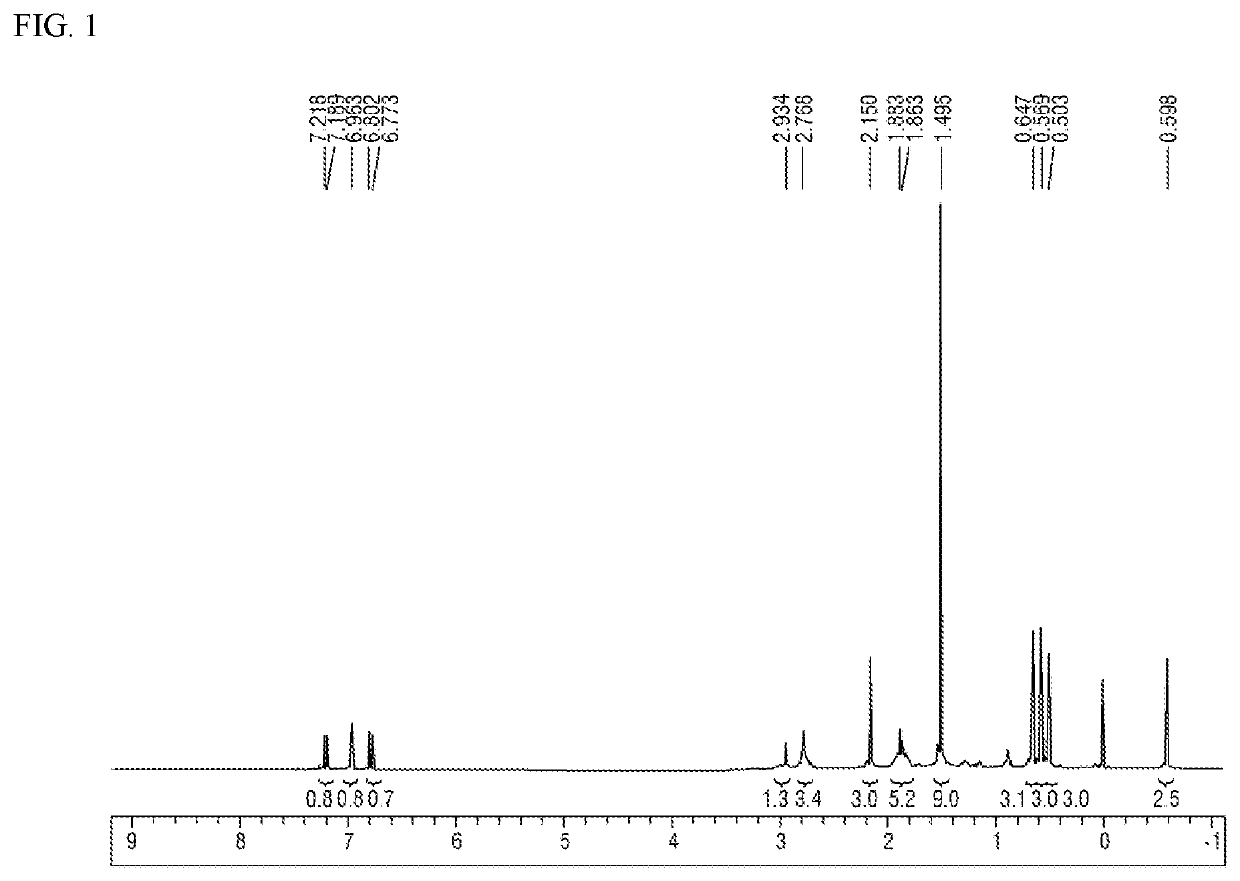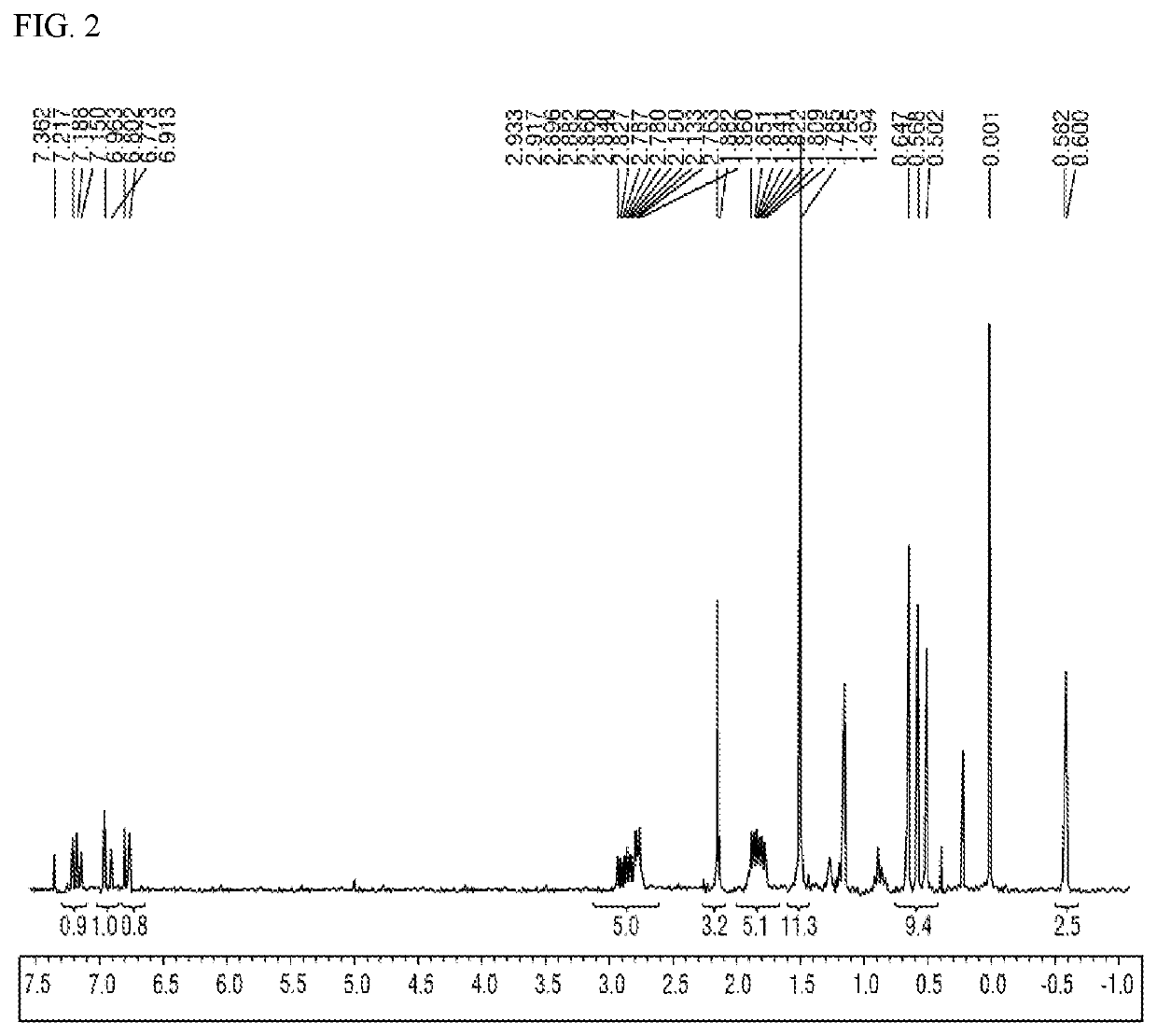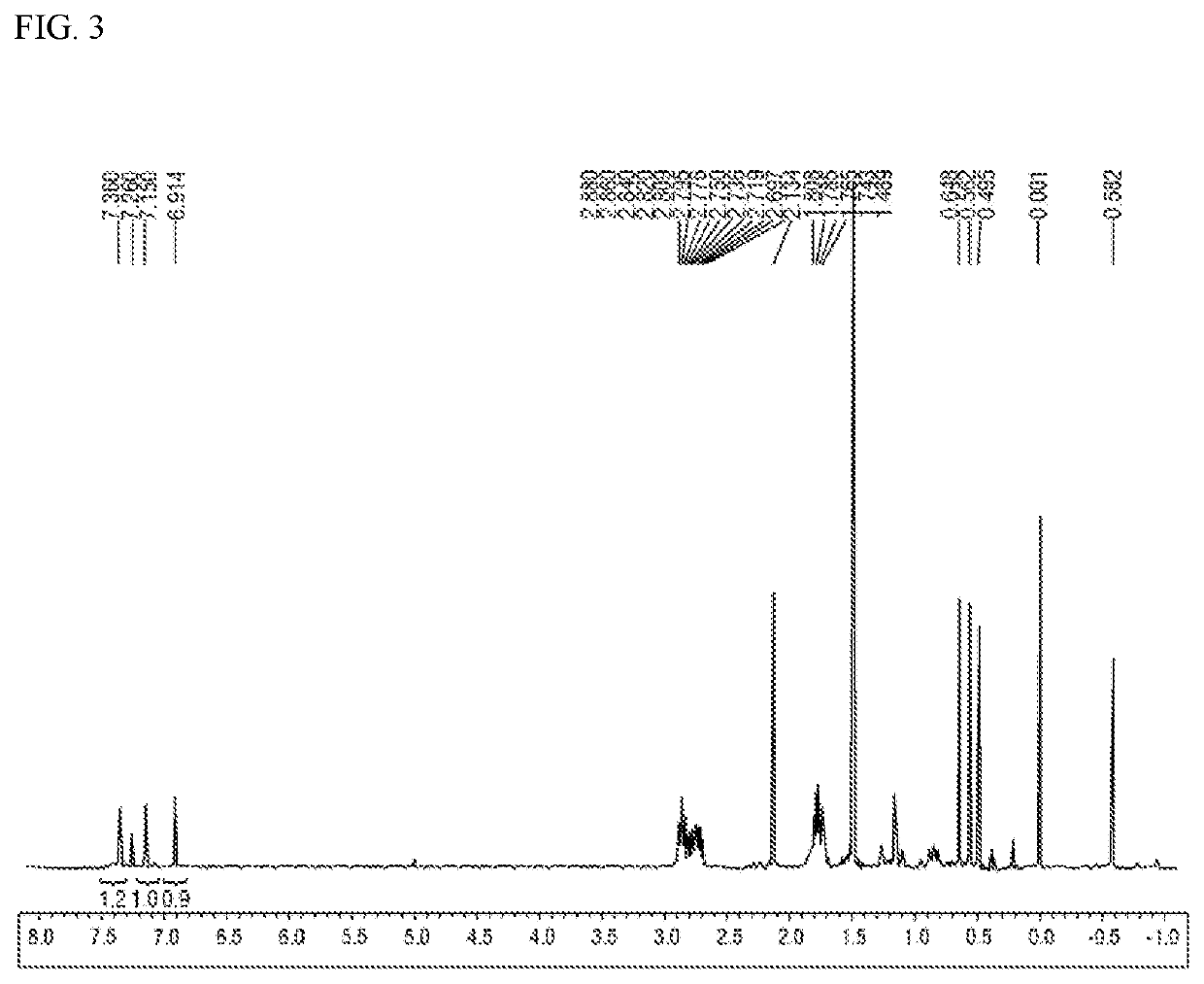Transition metal compound for olefin polymerization catalyst, olefin polymerization catalyst comprising same, and polyolefin polymerized using same
a technology of transition metal compound and olefin polymerization catalyst, which is applied in the direction of metallocene, chemistry apparatus and processes, organic chemistry, etc., to achieve excellent physical properties, high activity, and high copolymerization capability
- Summary
- Abstract
- Description
- Claims
- Application Information
AI Technical Summary
Benefits of technology
Problems solved by technology
Method used
Image
Examples
preparation example 1-1
-2,3,6,7,8,9-hexahydro-1H-cyclopenta[a]naphthalen-1-one
[0103]2-Bromo-2-methylpropanoyl bromide (17.4 g, 76 mmol) and a solution prepared by diluting 1,2,3,4-tetrahydronaphthalene (10.0 g, 76 mmol) in dichloromethane (200 mL) were added, at 0° C., to a solution prepared by dispersing AlCl3 (25.2 g, 189 mmol) in dichloromethane (200 mL). After completion of the addition, the mixture was stirred at room temperature for 12 hours, and water was added at 0° C. to terminate the reaction. Afterward, the organic layer was extracted, the solvent was removed in vacuo, the resultant was subjected to column chromatography, and thereby 7.9 g (52%) of 2-methyl-2,3,6,7,8,9-hexahydro-1H-cyclopenta[a]naphthalen-1-one was obtained.
[0104]1H-NMR (CDCl3, 300 MHz): d 7.50 (d, 1H), 7.10 (d, 1H), 3.22 (dd, 1H), 2.86-2.83 (m, 2H), 2.69-2.66 (m, 3H), 2.50 (dd, 1H), 1.92-1.77 (m, 4H), 1.30 (d, 3H).
preparation example 1-2
-2,3,6,7,8,9-hexahydro-1H-cyclopenta[a]naphthalen-1-ol
[0105]Sodium borohydride (NaBH4) (1.3 g, 35 mmol) was added, at 0° C., to a solution prepared by diluting the 2-methyl-2,3,6,7,8,9-hexahydro-1H-cyclopenta[a]naphthalen-1-one (5.9 g, 29 mmol) obtained in Preparation Example 1-1 in methanol (80 mL). The temperature was gradually raised to room temperature, and thereafter the mixture was stirred for one hour. After completion of the reaction, methanol was removed in vacuo, water and dichloromethane were subsequently added, and then the organic layer was extracted. Afterward, moisture was removed with magnesium sulfate, the solvent was removed in vacuo, and thereby 5.9 g (99%, isomer mixture) of 2-methyl-2,3,6,7,8,9-hexahydro-1H-cyclopenta[a]naphthalen-1-ol was obtained.
[0106]1H-NMR (CDCl3, 300 MHz): d 7.19-7.13 (m, 1H), 7.01-6.96 (m, 1H), 4.96 and 4.71 (2 broad t, 1H), 2.4-3.1 (m, 6H), 2.30-2.24 (m, 1H), 1.82-1.75 (m, 4H), 1.68 and 1.37 (2d, 1H), 1.25 and 1.18 (2d, 3H).
preparation example 1-3
-6,7,8,9-tetrahydro-3H-cyclopenta[a]naphthalene
[0107]The 2-methyl-2,3,6,7,8,9-hexahydro-1H-cyclopenta[a]naphthalen-1-ol (5.9 g, 29 mmol) obtained in Preparation Example 1-2 and p-toluenesulfonic acid (0.5 mol %) were added to toluene (60 mL), and the mixture was stirred for one hour while refluxing at 110° C. After completion of the reaction, water was removed with magnesium sulfate, the solvent was removed in vacuo, and thereby 5.2 g (97%) of 2-methyl-6,7,8,9-tetrahydro-3H-cyclopenta[a]naphthalene was obtained.
[0108]1H-NMR (CDCl3, 300 MHz); d 7.00 (2d, 2H), 6.45 (s, 1H), 3.12 (s; 2H), 2.81 (t, 2H), 2.71 (t, 2H), 2.15 (s, 3H), 1.85-1.82 (m, 4H).
PUM
| Property | Measurement | Unit |
|---|---|---|
| temperature | aaaaa | aaaaa |
| molar ratio | aaaaa | aaaaa |
| density | aaaaa | aaaaa |
Abstract
Description
Claims
Application Information
 Login to View More
Login to View More - R&D
- Intellectual Property
- Life Sciences
- Materials
- Tech Scout
- Unparalleled Data Quality
- Higher Quality Content
- 60% Fewer Hallucinations
Browse by: Latest US Patents, China's latest patents, Technical Efficacy Thesaurus, Application Domain, Technology Topic, Popular Technical Reports.
© 2025 PatSnap. All rights reserved.Legal|Privacy policy|Modern Slavery Act Transparency Statement|Sitemap|About US| Contact US: help@patsnap.com



